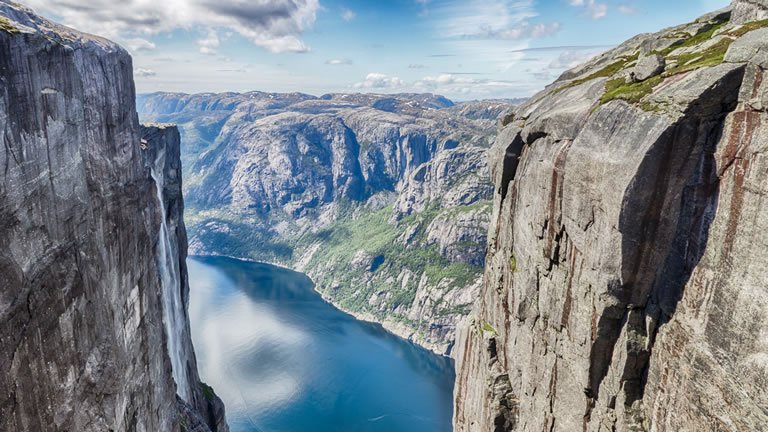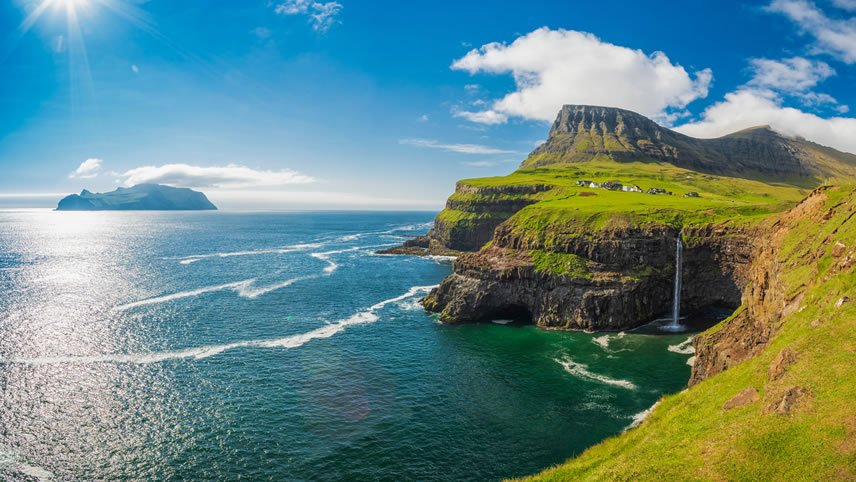From Hamburg To Iceland – Half Circumnavigation Of The Land Of Ice And Fire
Overview
Itinerary
It’s fitting that your expedition cruise starts in Hamburg, a city that wears its maritime heritage boldly on its sleeve. Germany’s second-largest city and biggest port, Hamburg offers fascinating history, magnificent museums, and an abundance of culture.
Hamburg is defined by its waterways. Often called the ‘Venice of the North’, you can enjoy a boat tour to explore the city’s canals and harbour front. Visit the old floating dock of Landungsbrücken and take in views of old ships, waterfront buildings and colourful souvenir shops. Be sure to visit the Old Elbe Tunnel nearby for a nostalgic and atmospheric walk.
Climb the 433 ft. bell tower of the famous St. Michael’s Church for sweeping views over the city. Many places of interest are concentrated in the Altstadt or Old Town. Check out St. Catherine’s Church and the St. Nikolai Memorial. Discover the timber-framed houses of Deichstraße Historic Street and see the impressive City Hall on Rathausmarkt Square.
Kontorhausviertel, Speicherstadt, and Chilehaus make up Hamburg’s lauded warehouse district – a recent addition to UNESCO’s World Heritage list. A sea of neo-Gothic red brick, the architecture is stunning. Head to Hamburg Kunsthalle, which ranks as the nation’s best art museum. When you’ve worked up an appetite, stop for some traditional Hamburger fare like aalsuppe, a ham soup with dried fruits, or labskaus, corned beef with potato and pickles.
Your comfortable expedition ship will be waiting for you at the port. After a mandatory safety briefing, you’ll attend a welcome dinner where the Captain will toast your journey. Afterwards, you can sink into an armchair in the Explorer Lounge & Bar with a glass of your favourite beverage and relax – your expedition is underway!
We recommend booking our optional Pre-Programme, which includes a city tour taking in the main sights of this modern yet historic city. Also included is a visit to the fantastic Elbphilharmonie concert hall’s observation deck.
Enjoy an idyllic day getting to know our next-generation vessel Fridtjof Nansen as we cross the North Sea and head towards the Norwegian coast. Explore the ship and familiarise yourself with its great expedition features, such as the observation deck, the Science Center and the lecture room.
Our onboard Expedition Team will start their lecture programme, giving talks in the Explorer Lounge and offering their insights into the history, heritage, and natural science of our upcoming destinations. Why not follow our biologists onto the outdoor decks as they scan the seas for wildlife.
Now’s also the perfect time to really get to know the ship and all its facilities. As our journey gets underway, you might also want to spend some time getting to know the crew and your fellow explorers. Strike up a conversation at the bar and see what you have in common with your shipmates, or relax in a comfortable chair by a window and watch the sea peacefully pass by – it's totally up to you!
Early in the morning we reach the Stavanger area and the highlight of the day, Lysefjord. It is 25 miles long, up to 1,400 ft. deep and boasts some of the most striking vertical cliffs of all the Norwegian fjords.
We sail as deep as possible into imposing Lysefjord towards the iconic viewpoint at Preikestolen. Also known as Pulpit Rock, it’s an iconic spot for a picture and a great place to take in the surrounding scenery.
As we approach Preikestolen, we hope to be treated to a fine view of this incredible rock formation from below. We might also see the equally renown Kjæragbolten where a giant boulder seems precariously wedged in a mountain crevasse.
If conditions allow, there’ll be an optional excursion partaking in a five-hour guided hike with the Expedition Team to the Preikestolen viewpoint 1,981 ft. above Lysefjord.
Should you prefer to stay on the ship, you can spend time out on deck drinking in the magnificent scenery and looking up at the majestic mountains towering above you.
Lerwick is Scotland’s northernmost town and has grown over time to accommodate a third of the Shetland Islands' population. This is a place where Scandinavian roots run deep and are celebrated by those that live here. Listen to the locals to hear the Norse-influenced dialect, and visit the Lerwick Town Hall to admire the stained-glass windows that chronicle events from the Viking period.
Built on the herring trade in the 17th Century, Lerwick still lands more fish than the whole of England, Wales and Northern Ireland combined. This is reflected in its gastronomy. Sample the variety of fish dishes available here, from salmon and shellfish to lythe, ling and John Dory. If seafood isn’t for you, why not try some traditional reestit soup, made with local mutton.
Shop for souvenirs in local boutiques along Commercial Street or visit the Shetland Museum to learn more about the town’s Norse heritage and culture. Take a look around the galleries, where Pictish carvings are contrasted with dainty Shetland lace shawls. Stand on the top of Fort Charlotte, an artillery fort in the centre of town with an intriguing past, and take in the remarkable views that stretch across Lerwick and beyond to the island of Bressay.
Grey and common seals are frequently spotted on Lerwick’s beaches, so if you spend some time along the waterfront, you might see these curious sea mammals poking their heads above the water near the shore. Don’t forget your binoculars, as the Shetland Islands are famous for their unique birdlife, with species such as Red-throated Diver, Redshank and Curlew breeding here.
On the southeast coast of Streymoy, the largest of the Faroe Islands, is a town where the modern and the ancestral stand side by side. Spend some time wandering the cobbled alleyways that weave between the traditional Faroese turf-roofed homes and the brightly coloured wooden houses that wouldn’t look out of place in a storybook.
Named “Thor’s Harbour” in Danish, after the god of thunder and strength, Tórshavn was founded by Norsemen in the 10th Century and might very well be the oldest capital in northern Europe. Visit the local museums and be transported back through time to learn about local origins, or gain a deeper understanding of the flora, fauna and geology of the Faroe Islands.
Make use of the free bus service to get around and get an authentic island life experience. Choose between a traditional or a more contemporary meal in one of Tórshavn’s restaurants, or sit for a while in one of its picturesque cafes. Visit Svartafoss Waterfall and you’ll forget you’re in the middle of a city! Relax on the mossy rocks and take in the view as you listen to the rushing water.
The Faroe Islands are mostly treeless, with rocky hills covered in a layer of soft grass that stretches almost all the way to the shoreline. As you explore the open plains you’ll probably come across sheep, and along the seafront you’ll see various kinds of seabirds. Try to spot a Faroese Starling, with its beige-tipped metallic wings, or an Eider Drake, with its distinctive green patch on the back of its neck.
Some places just know how to make an entrance. Our destination today sits at the end of a 10-mile-deep fjord lined with picturesque mountains and waterfalls. Seyðisfjörður - pronounced ‘say-this-further,’ - is a characterful village of about 700 people and is certainly one of the most eclectic towns you’ll visit in Iceland.
Seyðisfjörður is famous for its characteristic colourful wooden houses, built by Norwegian settlers in the early 20th Century. Set against a backdrop of mountains and waterfalls, the vibrant buildings pop-out, creating a genuinely unique settlement identity.
The aptly-named Rainbow Road only emphasises this delightfully quirky aesthetic. There are not many streets in the world painted top to bottom in the colours of the rainbow, with an eye-catching blue church at the end. You’ll definitely want to get your picture taken here.
Remote, peaceful and serene, Seyðisfjörður is great for outdoor activities including birdwatching, hiking and, if available, kayaking. A short uphill trail from the town leads to an unusual sound sculpture, Tvisongur - a cluster of concrete domes with incredible acoustics. The hills above the town offer longer hikes. Waterfall Lane, is an enjoyable 4-6 mile hike that, true to its name, winds its way to several stunning waterfalls.
Situated at the edge of the fjord, you’ll find Skalanes – a private nature reserve surrounded by cliffs and home to wildlife including reindeer, Arctic fox and mink. Bird lovers can look forward to seeing various summer visitors including the Black-tailed Godwit, Golden Plover and - if you’re lucky - the Gyr Falcon, Europe’s largest falcon.
Grimsey is the archetypal windswept Icelandic island. We’ll use our adaptable expedition boats to reach this small, green and grassy island, on which only around 60 people live. The only settlements are located on the southern and western parts - mostly around the little harbour.
The beautiful island is steeped in folklore. The hardiness of the local fishermen is attributed to Grimsey’s first settler Grímur. Legend has it he slew the giants and trolls who inhabited the island and took one of their daughters as his bride.
The sheer cliffs are home to vast colonies of sea birds – outnumbering humans 17,000 to 1 – and in summer, the intrepid islanders will abseil down to collect the eggs that are considered a local delicacy. The presence of so many Atlantic Puffins, the iconic seabird species of Grimsey, is a major attraction for bird lovers.
Grimsey is probably best known for its proximity to the Arctic Circle, which cuts across the island - the only part of Iceland to do so. You’ll have the chance to step across that line, hopping over to the Arctic and back!
You can explore the island on foot and hike to the ‘Orbis et Globus’ a nine-ton concrete sphere that marks the edge of the Arctic Circle. The walk to the monument will allow you to take in the windswept scenery and observe birds. The nine-feet-high globe is moved a bit each year by the locals as the Arctic Circle creeps slowly northwards at a rate of about 48 feet a year.
By 2050, Grimsey Island will lie outside the Arctic – more reason to visit now!
Akureyri is located near the base of the longest fjord in Iceland, Eyjafjörður. As we cruise along the fjord, you’ll get incredible views of snow-capped peaks and a lush coastline. The rich waters here make it one of the best places in the country to spot cetaceans. Species including humpback, white-beaked dolphins and harbour porpoises are regular visitors, although orcas, blue and fin whales have been seen here too.
Nicknamed Iceland’s ‘Northern Capital’, Akureyri is a lively university town. With a population of almost 20,000 it’s the largest metropolitan area outside the southwest region, meaning there’s plenty to delve into here including some top-notch eateries and museums. Check out the Akureyri Museum, which gives you an insight into how Icelanders used to live here. The Nordurslod Museum of natural history also combines exhibitions about the local environment and the history of settlers
You’ll be astonished by the array of plants and foliage at the Arctic Botanical Gardens. Its serene atmosphere is like an oasis of lush green in the most unlikely of settings. And while you’re exploring the town, check out the striking architecture of Akureyri Church, designed by the architect Gudjon Samuelsson.
On an optional excursion outside town, you can explore natural treasures often considered some of the must-see sights in Iceland. At Goðafoss waterfall, nicknamed ‘waterfall of the gods,’ you’ll see translucent turquoise water pounding against immense black rocks.
Located within a highly active volcanic area, Lake Mývatn has unique and beautiful geology, including shimmering waters and otherworldly colours. It’s also a great place for birds, Eider and Harlequinn Ducks in particular. Fans of hit series Game of Thrones may recognise this place.
One of the best things about expedition cruising is the feeling that anything can happen on any given day. The elements and conditions mean nothing is ever quite set in stone. That’s why we’ve carved out one day on your expedition to fully take advantage of that novelty - an exploration day, with no pre-arranged plan for the day.
We plan to be in Iceland’s Northwestern Region, but the rest will be up to the Captain and the Expedition Team to decide. They will set the final plan for the day, depending on conditions and opportunities that may come up.
Activities might include using our expedition boats to come ashore for hiking, participating in a beach clean-up or launching our kayaks. If a pod of whales breaches the surfaces as we’re sailing, we may decide to linger and enjoy the sight. Being adaptable to whatever nature presents to us is what expedition cruising is all about.
When Orlygur Harppsson saw today’s destination for the first time in the 9th Century, he named it Patreksfjördur, or ‘Fjord of St Patrick,’ after the saint. Its appeal today is just as uncomplicated – this settlement on the west coast of Iceland is utterly gorgeous.
Discover the peace and silence of a tranquil fishing village. Serving as a fishing port as far back as the 16th Century, this is a town shaped by a rich maritime history. Patreksfjördur served as a base for English, French and German fishermen, merchants and naval mariners in old times.
As you explore the lively harbour, you’ll learn about the town’s local fishing tradition and the different kinds of fish found in its waters. You can also choose to take a dip in the outdoor pool, a new addition to the town with wonderful views over the fjord.
The sheer beauty of this region will make hiking through it such a rewarding activity, if conditions allow. Nearby is Latrabjarg, Europe’s largest bird cliff and most western point. It’s home to millions of birds including Puffins, Northern Gannets, Guillemots and Razorbills. Safe from Arctic foxes, the birds cling to the high cliffs, offering excellent photo opportunities.
The dream beach of Raudsandur is also close by. In contrast to other beaches in Iceland which are black with volcanic sands, Raudsandur is rose–coloured with golden hues.
The Dynjandi series of waterfalls are also one of the big draws of this area, and it’s easy to see why. Six different cascades combine to make the largest waterfall in the Westfjords with a cumulative height of about 300 ft. In a country famed for its waterfalls, this is one of the most impressive.
Our first stop is Stykkisholmur, pronounced ‘Stikkish – holmur’, a small fishing town surrounded by views of innumerable islets in the picturesque Breiðafjörður Bay. With a population of roughly a thousand people, no traffic, and a laid-back, slow vibe, it gives the impression of a place where time has stood still.
Perhaps Stykkisholmur’s most defining feature is the presence of so many well-preserved houses in the old centre. Bursting with colour, they stand out in contrast to the distant mountain ranges. Repurposed, the former library is now an art installation, the old recreation centre now harbours a volcano museum, and the seafood processing plant is now a restaurant that serves up delicious fish soup.
Another highlight of the town is Norwegian House, named for the Norwegian imported wood used to build it in 1832. The Regional Museum of Snæfellsnes is based here, with rotating exhibitions and handicraft on sale. For a lovely view over the town, hike to the top of the cliff with the little orange lighthouse.
Most people, however, come here to see the fantastic Snæfellsnes Peninsula National Park. It’s nicknamed ‘Little Iceland’ as everything the country has to offer can be found here, including fjords, mountains, waterfalls, volcanoes, lava fields and more.
An optional excursion to Snæfellsnes will take you to some of its most iconic sights, such as the black-sand beach at Djúpalónssandur, where – if you’re feeling energetic – you can try your hand at lifting ‘strength testing’ rocks placed there by Vikings. A word of warning though: the heaviest rock weighs 340 lb!
Another stop is at the Lóndrangar basalt cliffs where huge stacks of jagged rock jut photogenically out of the sea. Interesting fact: the massive Snæfellsjökull volcano, which looms over the landscape, is the setting of the classic sci-fi novel Journey to the Centre of the Earth, by Jules Verne
Our next stop is Heimaey, the only inhabited island in the Vestmannaeyjar archipelago, off the south coast of Iceland. Everything here has been touched in some way by the volcanic eruption that occurred unexpectedly one morning in January 1973. The narrow harbour, the tephra -made airport runway and the curl of cooled lava in the town centre all point to the volcanic cone that casts a figure over the island.
Heimaey means “Home Island,” and you’ll certainly feel welcome here. It’s near 4,000 inhabitants are friendly and the green landscape is pleasing to the eye. You can learn all about the town’s history at the Museum of Eldheimar. Heimaey has got a fascinatingly dark past, complete with runaway slaves, murder, revenge and pirates. And that’s before you get to the volcano that almost destroyed the island.
The Sea Life Trust Beluga Whale Sanctuary is also one of the town’s highlights. Home to two resident belugas, the sanctuary includes a local species aquarium and a Puffin rescue centre.
In keeping with the rest of the Westmann Islands, Heimaey provides a habitat for countless birds, with around eight million Puffins nesting here every summer. A hike to Stórhöfði, south of the island, will provide you with excellent opportunities to observe them nesting. Claimed to be the windiest spot in Europe, you’ll be grateful for viewing facilities that’ll allow you to quietly observe these delightful birds in their natural habitat.
A visit to Heimaey would not be complete without checking out its most prominent feature, Eldfell, or “Mt. Fire.” By the end of its eruption, it stood at 720 ft. And it’s worth the effort to hike to the top. You’ll have incredible views of the town below and the winning feeling of conquering the volcano that almost wiped out the island.
We say a fond farewell to our ship MS Fridtjof Nansen as we end our journey in Reykjavik, the northernmost capital in the world. If you have time, this small city is the perfect size for a walking tour, packed full of art, culture and history.
Take a stroll along Laugavegur, the main shopping street, with its boutiques and outdoor shops. If you’re an art lover, you’ll enjoy the Reykjavik Art Museum, National Gallery and the many smaller galleries and museums dotting the city. From the comprehensive National Museum to the delightful Icelandic Punk Museum, you’re bound to find one or more to engage you.
Named by the first Viking settlers, who saw rising steam from the surrounding geothermal features, Reykjavik means ‘Smoky Bay’ in English. The city lies only a few hours away from Iceland’s fabled lagoons, geysers, hot springs and waterfalls.
Iceland’s abundance of geothermal energy sources has forged a strong tradition of public bathing in swimming pools and hot tubs known as “heittur pottur” in Icelandic. They’re what pubs are to the British - a perfect way of catching up with friends and unwinding after a long day. Bring your swimsuit if you fancy a dip in one of the city’s 18 swimming pools, many of them have saunas and heitur pottur.
Blue Lagoon is probably Iceland’s most famous heittur pottur. Situated in a vast 800-year-old lava field, the water’s blend of silica, algae and minerals have helped this magical location earn its place on National Geographic’s Top 25 Wonders of the World. As a way of signing off your adventure, few things would top soaking yourself in relaxing volcanic water with a beverage of your choice surrounded by beauty.
We recommend booking one of our Post-Programmes to explore the city and beyond further. Whatever’s next for you, we wish you a safe onward journey and look forward to seeing you on your next adventure!
Life Onboard MS Fridtjof Nansen
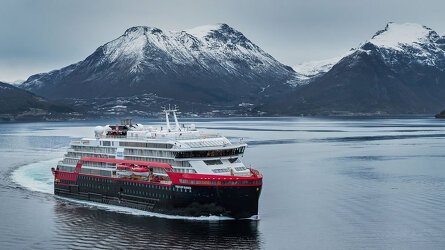
Step aboard this hybrid-powered expedition ship to explore remote corners of the globe in complete comfort. Read more

Your dedicated team deliver an educational onboard program and exciting shore excursions to enrich your expedition. Read more
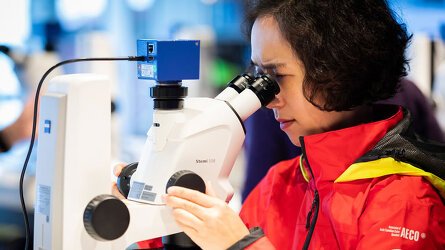
Step into the Expedition Team's headquarters and enjoy specialist lectures and interactive workshops. Read more

Dine on international dishes and menus inspired by Hurtigruten's Norwegian heritage in the three onboard restaurants. Read more
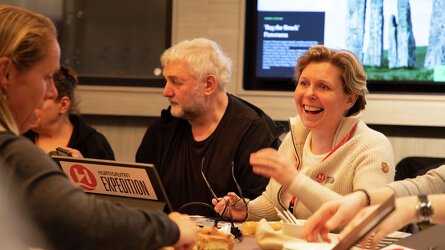
Feel right at home with a sense of comfort and contentment as Hurtigruten share with you the sentiment of 'hygge'. Read more
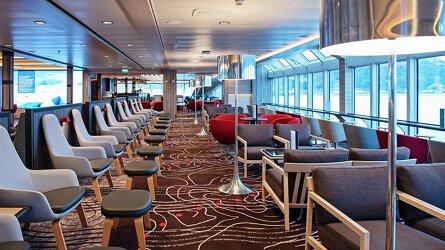
MS Fridtjof Nansen takes the scenic route, and is equipped with viewing spaces to enjoy the views in any weather. Read more

Availability Click on prices below to view cabin upgrades and details
Tour & cruises prices are per person. Prices shown have savings applied, are subject to availability and may be withdrawn at any time without notice. Prices and trip information are correct at the time at this point in time, however are subject to confirmation at the time of booking and are subject to change by Hurtigruten. For cruise itineraries, cabin images are sourced from Hurtigruten. These should be treated as indicative only. Cabin inclusions, upholsteries and room layout may differ to the image(s) shown depending on the ship selected and your sailing dates.
Similar Cruises
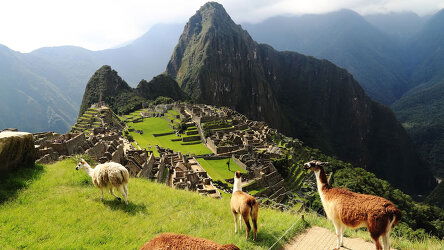
14 Days Lima Valparaiso
Operated By: Hurtigruten

14 Days Bergen Oslo
Operated By: Hurtigruten
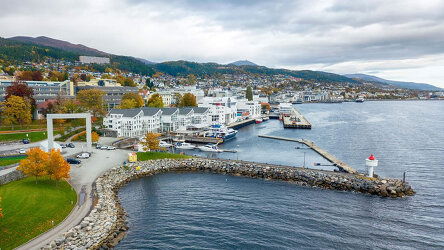
14 Days Oslo Bergen
Operated By: Hurtigruten
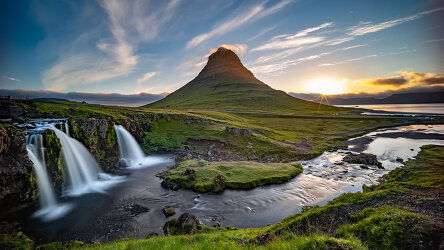
14 Days Glasgow Oslo
Operated By: Hurtigruten
